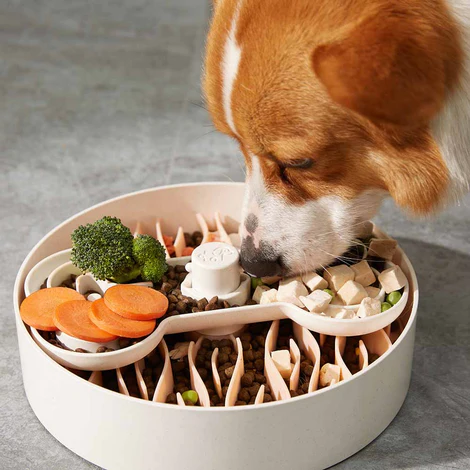1. Introduction
Introduce the concept of pet housing as more than shelters—transformative elements enhancing pets’ well-being and décor. Touch on trends: eco-friendly designs, indoor/outdoor adaptation, and multi-pet setups. Set a warm, enthusiastic tone encouraging exploration.
2. Why Thoughtful Pet Housing Matters
- Emotional & Physical Benefits: Security, comfort, safe retreat.
- Climate Considerations: Insulation, ventilation, weather protection.
- Matching Lifestyle: Portable solutions, indoor/outdoor dynamics.
- Aesthetics & Home Harmony: Blending or accenting your design.
3. Design Styles & Inspiration
A. Modern Minimalist
Clean lines, neutral tones, sleek wood/plastic blends.
B. Rustic & Natural
Reclaimed wood, outdoor textures, organic shapes.
C. Outdoor Gazebo / “Pet Pavilion”
Open-air yet sheltered lounging spaces ideal for sunny days.
D. Small-Space/Indoor Habitats
Compact, multi-functional pieces like end‑table kennels or cushioned cabins.
E. Climate-Specific Builds
Insulated houses with hinged roofs and heat lamps for winter, ventilated for summer (image6 shows an insulated style).
4. DIY Builds: Step-by-Step Projects
Project 1: “Scandinavian Slatted Dog House”
Materials: Cedar slats, 2×4 frame, pitched roof.
Steps: framing, slats placement, roof assembly, finish.
Tips: gap sizing for airflow, solar fan.

Project 2: “Rustic Deck Dog House”
Built-in porch, tongue-and-groove siding, insulation for temperature resilience.
Materials: plywood, insulation board, 2×4 lumber.
Steps with insulation installation for winter comfort.
Project 4: “Compact Indoor Habitat”
Ideas for cats/small dogs: cushioned reading-nook style, heating pads, removable cushions.
Include design sketches and material considerations.
Project 5: “Insulated Outdoor House with Portable Roof”
Detailed build: insulation layers, hinged roof, weatherproof coating.
Step-by-step: frame, insulation, siding, roof, weather seal.
5. Choosing Materials & Tools
- Wood Types: Cedar vs. pine vs. treated lumber.
- Insulation: Rigid foam, foil wrap, thermal mats.
- Hardware/Connectors: Brackets (e.g. Simpson Strong-Tie), screws, staple guns.
- Finishes: Outdoor paints, non-toxic stains, weather sealant.
- Tools Needed: Table saw, miter saw, drill, jig saw, stapler, level, measuring tools.
6. Planning & Customizing
- Sizing: Measure pet in sitting/laying position.
- Indoor vs Outdoor: Flooring, ventilation, drainage.
- Dual-pet & Multi-functional Layouts: Shared partitions, integrated feeding stations.
- Mobility: Wheels, lightweight frames for portability.
7. Safety, Maintenance & Comfort
- Safety Features: Rounded edges, non-toxic surfaces, stable build.
- Climate Adaptations: Insulated walls, shade covers, solar fans.
- Cleaning & Hygiene: Removable bedding, waterproof liners.
- Comfort Add-ons: Cushions, faux fur pads, shade awnings.
8. Showcasing Your Builds / Community Engagement (≈350 words)
- Feature user-submitted photos and plans.
- Monthly themed showcases (e.g. “Pet Pavilion of the Month”).
- Shareable DIY plans, templates, downloadable PDFs.
- Community forum for questions, tips, troubleshooting.
9. Resources & Further Inspiration
- Curated list of video tutorials, articles, plan repositories.
- Recommended posts: e.g., Jen Woodhouse’s dogzebo series, insulated build guides.
- Links to supplier websites for materials and hardware.
10. Conclusion & Call to Action
Recap: thoughtful pet habitats benefit pets and owners alike. Encourage readers to start small, share results, and explore deeper builds. Invite subscriptions, plan downloads, and community contributions.
Summary of Image Placements
- Minimalist wood doghouse – Scandi design (image0).
- Rustic pallet‑style build – outdoor cabin (image2).
- Pet Gazebo / Dogzebo – pavilion style (image3).
- Slatted air‑flow detail – slats close‑up (image0 repeat).
- Decked doghouse – porch build (image3).
- Insulated winter build – climate‑adapted style (image6).
- (Optional) Cozy indoor habitat – could source additional image.
Tips
- Write clearly, break into sub-sections with headers.
- Downloadable plan files boost engagement.
- Include video embed or highlight for at least one tutorial.
- Incorporate user photos/enhance community.

